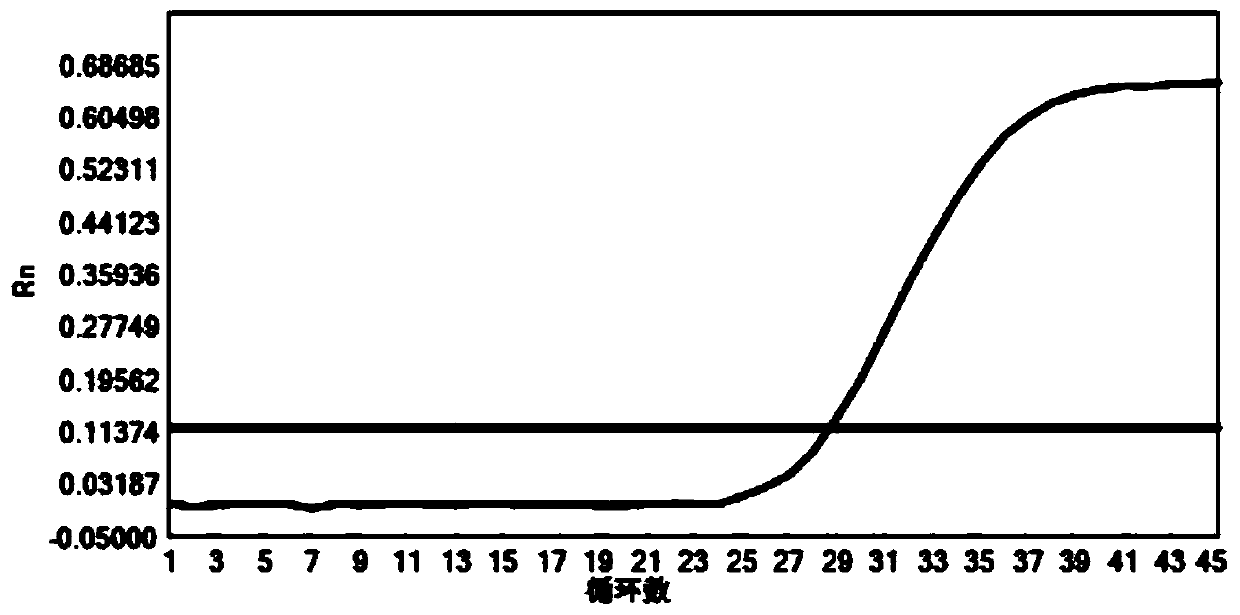Oligonucleotide combination, method and kit used for mycobacterium strain identification
An oligonucleotide and mycobacterial technology, applied in biochemical equipment and methods, recombinant DNA technology, microbial assay/inspection, etc., can solve the problem of inability to identify specific species of mycobacteria, insensitivity and accuracy verification , the inability to detect multiple mycobacterial species/subspecies, etc., to achieve the effect of fast detection, convenient detection and wide clinical application.
- Summary
- Abstract
- Description
- Claims
- Application Information
AI Technical Summary
Problems solved by technology
Method used
Image
Examples
Embodiment 1
[0068] Embodiment 1, the design of primer and probe
[0069] The oligonucleotide combination provided in the present invention includes 28 primers and probes as shown in the following list 1: SEQ ID NO: 1-28, which can specifically detect tuberculosis mycobacteria and non-tuberculous mycobacteria, specifically including Mycobacterium tuberculosis (TB), Mycobacterium kansasii (MK), Mycobacterium avium (MA), Mycobacterium fortuitously (MF), Mycobacterium abscessus subsp. abscessus (MAA), Mycobacterium abscessus subsp. ), Mycobacterium intracellulare (MIN), etc.
[0070] Table 1
[0071]
[0072]
[0073] Wherein, F and R are forward and reverse primer pairs of amplification primers, IC-F and IC-R are internal standard primer pairs, P is a detection probe, and P1 and P2 are fluorescent amplification primer pairs, wherein, The fluorescent amplification primer pair P1 and P2 also have the structure of the C3 interarm, the fluorescent amplification primer pair MAA and TB P2 ...
Embodiment 2
[0074] Embodiment 2, the extraction process of sample DNA
[0075] The detection sample of the present invention is sputum. Use the nucleic acid extraction / purification reagent based on the magnetic bead method (product number S1006, Hunan Shengxiang Biotechnology Co., Ltd.) to extract DNA, and perform the following operations in the sample processing room:
[0076] 1. Take an appropriate amount of 1.5 mL sterilized centrifuge tubes, mark the negative control, positive control and samples to be tested respectively, and add 300 μL DNA extraction solution 1 to each tube;
[0077] 2. Add 200 μL of the sample to be tested or negative control and positive control to each tube; cover the tube cap, shake and mix for 10 seconds, and centrifuge briefly;
[0078] 3. Add 100 μL of DNA extraction solution 2-mix to each tube (mix well and then draw), shake and mix for 10 seconds, then let stand at room temperature for 10 minutes;
[0079] 4. After instantaneous centrifugation, place the ...
Embodiment 3
[0083] Embodiment 3, PCR amplification process
[0084] Take 5 μL of the eluent prepared in Example 2 above, and prepare according to the reaction system described in Table 2 below.
[0085] Table 2
[0086] Component Volume / concentration for each reaction Mg 2+
2-6mM dNTPs (100mM) 0.1-0.4mM Taq enzyme (5U / μL) 2-10U SEQ ID NO:1-16 100-500nM SEQ ID NO:17-20 50-250nM SEQ ID NO:21-24 50-250nM SEQ ID NO:25-28 50-250nM eluent 5μL PCR buffer Make up to 50μL
[0087] The PCR amplification program is shown in Table 3 below.
[0088] table 3
[0089]
[0090]
PUM
 Login to View More
Login to View More Abstract
Description
Claims
Application Information
 Login to View More
Login to View More - R&D
- Intellectual Property
- Life Sciences
- Materials
- Tech Scout
- Unparalleled Data Quality
- Higher Quality Content
- 60% Fewer Hallucinations
Browse by: Latest US Patents, China's latest patents, Technical Efficacy Thesaurus, Application Domain, Technology Topic, Popular Technical Reports.
© 2025 PatSnap. All rights reserved.Legal|Privacy policy|Modern Slavery Act Transparency Statement|Sitemap|About US| Contact US: help@patsnap.com



